Thinking and Intelligence. 1. Interrelation of cognitive areas

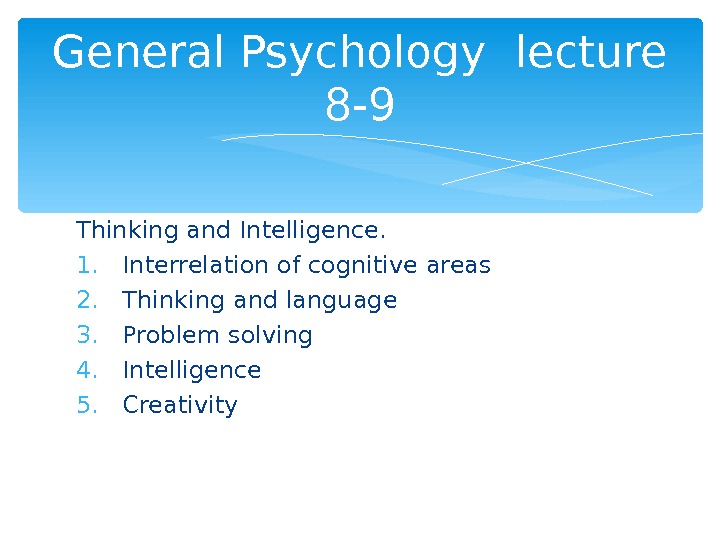
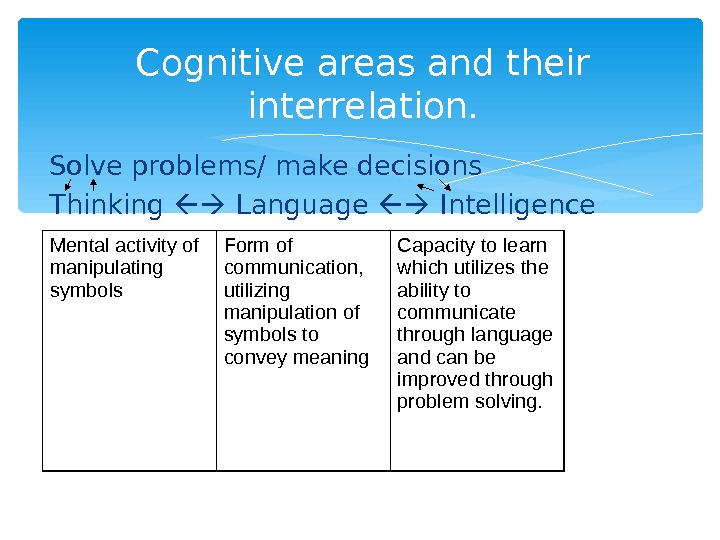
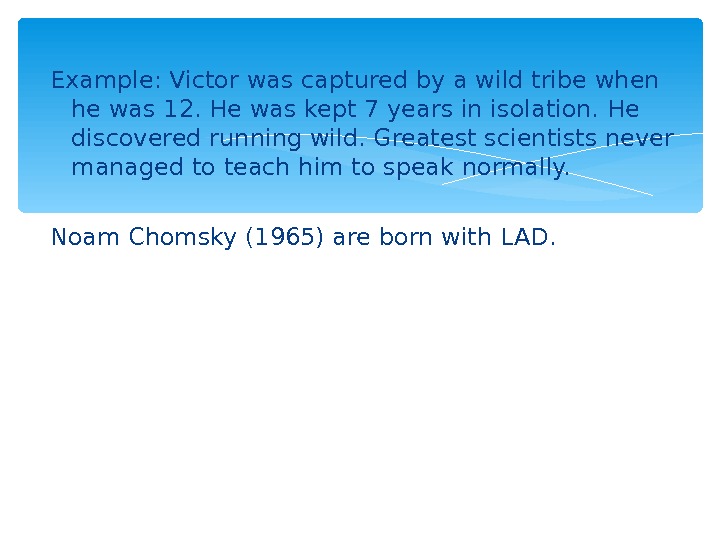
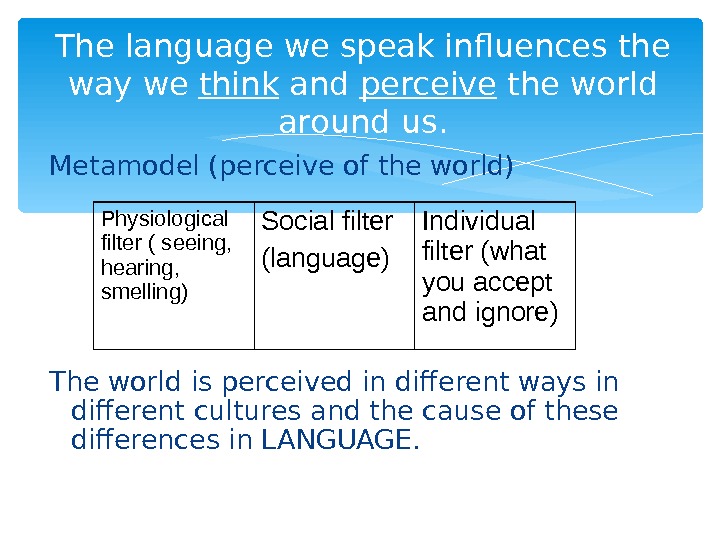

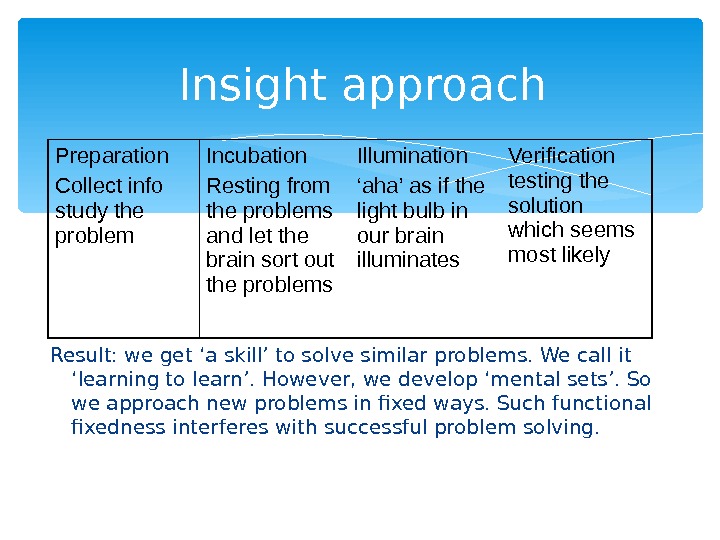


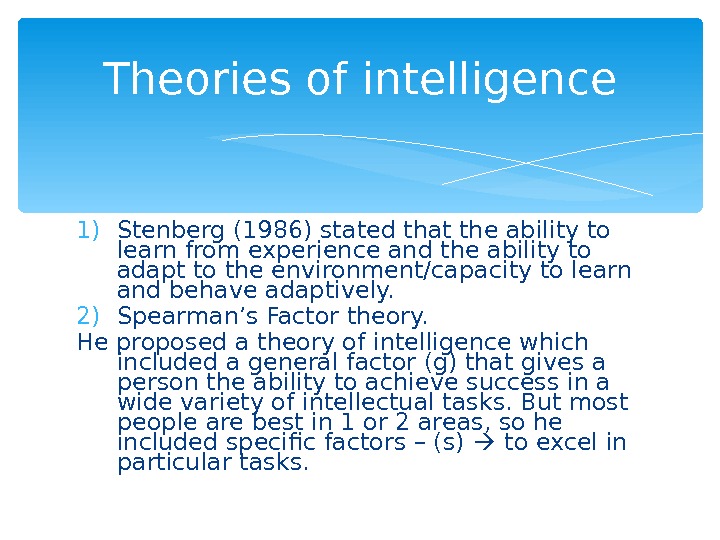
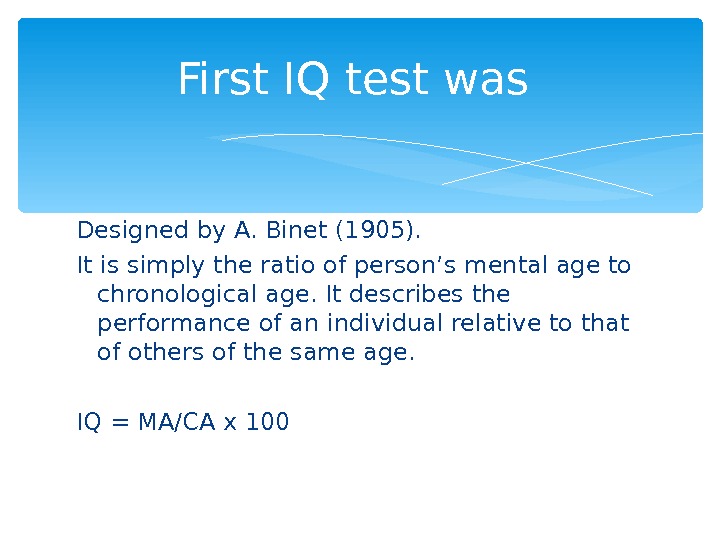
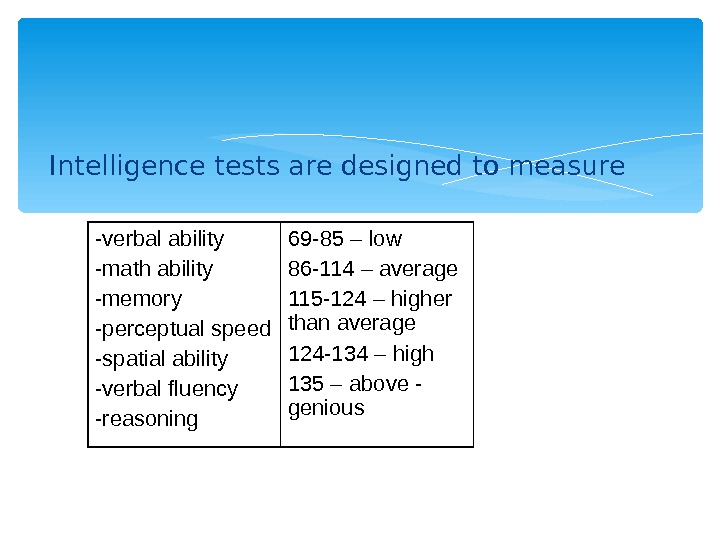
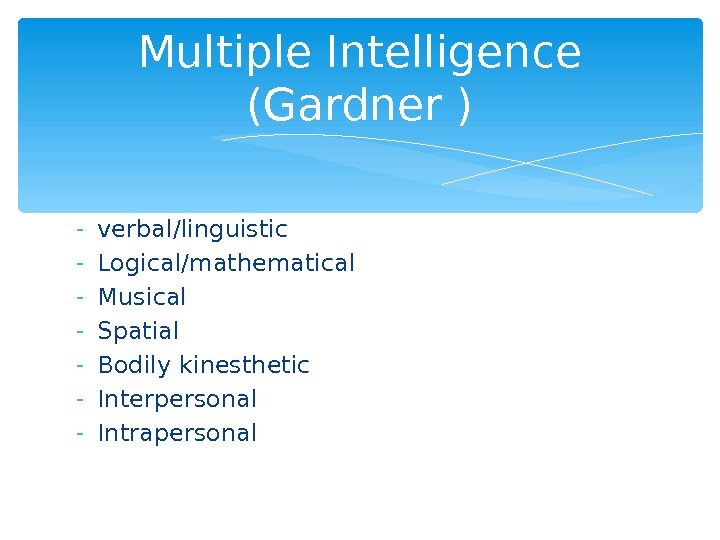

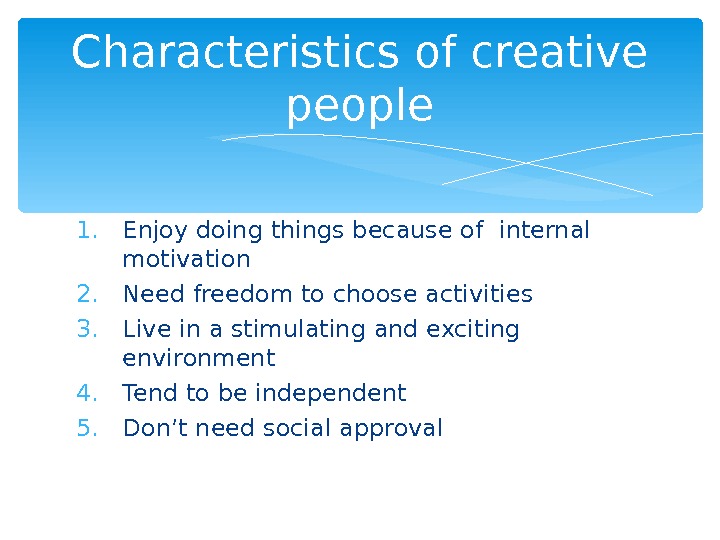
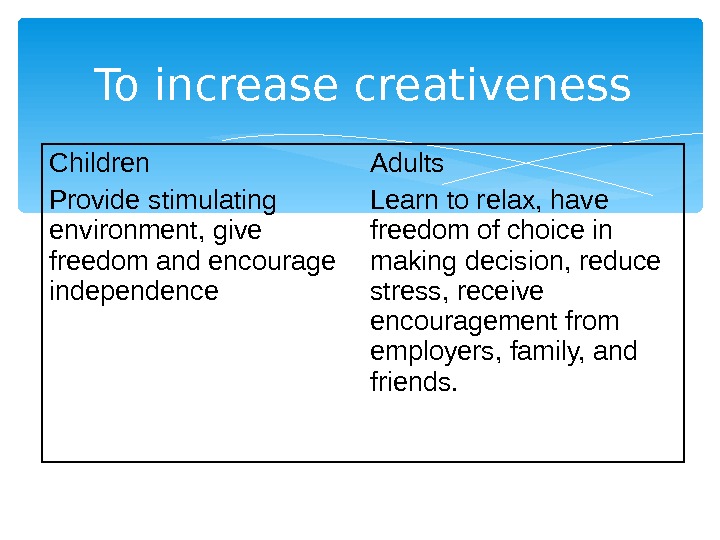
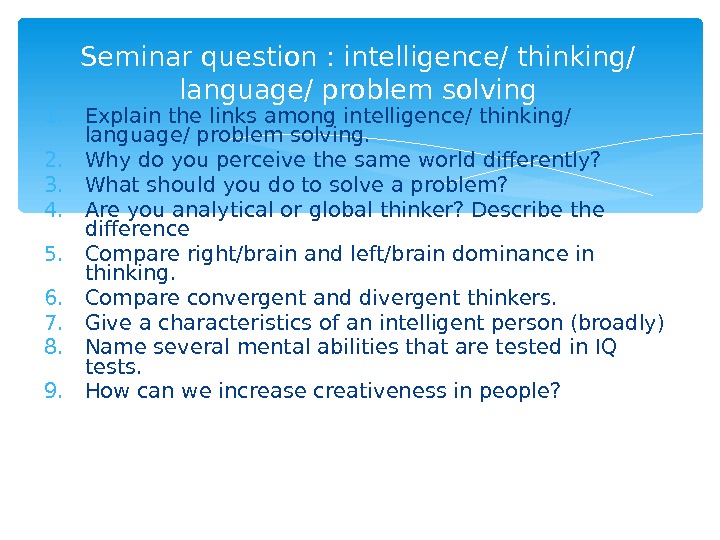
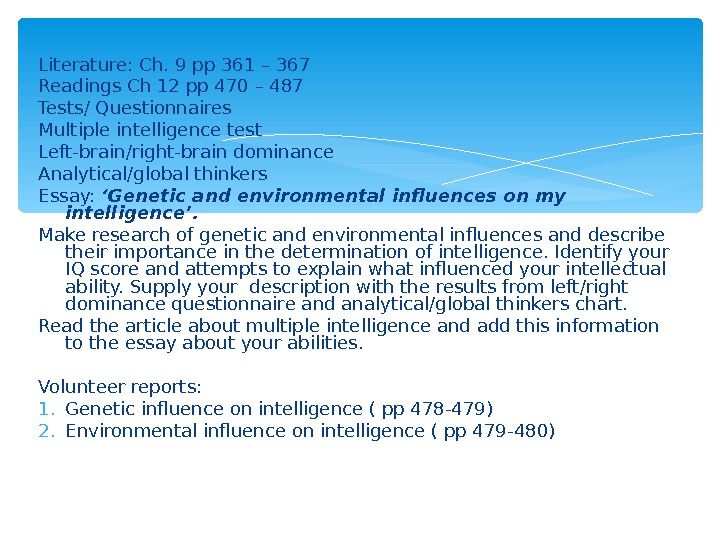
general_psychology_lecture_8-9.ppt
- Размер: 1.3 Mегабайта
- Количество слайдов: 17
Описание презентации Thinking and Intelligence. 1. Interrelation of cognitive areas по слайдам
 Thinking and Intelligence. 1. Interrelation of cognitive areas 2. Thinking and language 3. Problem solving 4. Intelligence 5. Creativity General Psychology lecture 8 —
Thinking and Intelligence. 1. Interrelation of cognitive areas 2. Thinking and language 3. Problem solving 4. Intelligence 5. Creativity General Psychology lecture 8 —
 Cognitive areas and their interrelation. Solve problems/ make decisions Thinking Language Intelligence Mental activity of manipulating symbols Form of communication, utilizing manipulation of symbols to convey meaning Capacity to learn which utilizes the ability to communicate through language and can be improved through problem solving.
Cognitive areas and their interrelation. Solve problems/ make decisions Thinking Language Intelligence Mental activity of manipulating symbols Form of communication, utilizing manipulation of symbols to convey meaning Capacity to learn which utilizes the ability to communicate through language and can be improved through problem solving.
 Example: Victor was captured by a wild tribe when he was 12. He was kept 7 years in isolation. He discovered running wild. Greatest scientists never managed to teach him to speak normally. Noam Chomsky (1965) are born with LAD.
Example: Victor was captured by a wild tribe when he was 12. He was kept 7 years in isolation. He discovered running wild. Greatest scientists never managed to teach him to speak normally. Noam Chomsky (1965) are born with LAD.
 The language we speak influences the way we think and perceive the world around us. Metamodel (perceive of the world) The world is perceived in different ways in different cultures and the cause of these differences in LANGUAGE. Physiological filter ( seeing, hearing, smelling) Social filter (language) Individual filter (what you accept and ignore)
The language we speak influences the way we think and perceive the world around us. Metamodel (perceive of the world) The world is perceived in different ways in different cultures and the cause of these differences in LANGUAGE. Physiological filter ( seeing, hearing, smelling) Social filter (language) Individual filter (what you accept and ignore)
 Problem solving Learning (trial and error) Information processing 1) Formulating a problem 2) Transfer it in ways that facilitate its solution 3) Laying out a strategy 4) Using feedback Insight When we face a problem and feel frustrated. Suddenly we see things in a different light and the solution.
Problem solving Learning (trial and error) Information processing 1) Formulating a problem 2) Transfer it in ways that facilitate its solution 3) Laying out a strategy 4) Using feedback Insight When we face a problem and feel frustrated. Suddenly we see things in a different light and the solution.
 Insight approach Result: we get ‘a skill’ to solve similar problems. We call it ‘learning to learn’. However, we develop ‘mental sets’. So we approach new problems in fixed ways. Such functional fixedness interferes with successful problem solving. Preparation Collect info study the problem Incubation Resting from the problems and let the brain sort out the problems Illumination ‘ aha’ as if the light bulb in our brain illuminates Verification testing the solution which seems most likely
Insight approach Result: we get ‘a skill’ to solve similar problems. We call it ‘learning to learn’. However, we develop ‘mental sets’. So we approach new problems in fixed ways. Such functional fixedness interferes with successful problem solving. Preparation Collect info study the problem Incubation Resting from the problems and let the brain sort out the problems Illumination ‘ aha’ as if the light bulb in our brain illuminates Verification testing the solution which seems most likely
 — The ability to verbalize, solve problems, achieve goals — Sensitivity to other people, honesty with self and others — The capacity to understand one’s world and the resourcefulness to cope with the challenges of that wolrd. Intelligence.
— The ability to verbalize, solve problems, achieve goals — Sensitivity to other people, honesty with self and others — The capacity to understand one’s world and the resourcefulness to cope with the challenges of that wolrd. Intelligence.
 Students are considered intelligent if they understand the course material and are able to earn above-average. People in business are considered intelligent if they understand the financial world and are successful in making a profit. Intelligence is culture bound: American culture- math and verbal skills; Hunting culture- throwing a spear accurately.
Students are considered intelligent if they understand the course material and are able to earn above-average. People in business are considered intelligent if they understand the financial world and are successful in making a profit. Intelligence is culture bound: American culture- math and verbal skills; Hunting culture- throwing a spear accurately.
 1) Stenberg (1986) stated that the ability to learn from experience and the ability to adapt to the environment/capacity to learn and behave adaptively. 2) Spearman’s Factor theory. He proposed a theory of intelligence which included a general factor (g) that gives a person the ability to achieve success in a wide variety of intellectual tasks. But most people are best in 1 or 2 areas, so he included specific factors – (s) to excel in particular tasks. Theories of intelligence
1) Stenberg (1986) stated that the ability to learn from experience and the ability to adapt to the environment/capacity to learn and behave adaptively. 2) Spearman’s Factor theory. He proposed a theory of intelligence which included a general factor (g) that gives a person the ability to achieve success in a wide variety of intellectual tasks. But most people are best in 1 or 2 areas, so he included specific factors – (s) to excel in particular tasks. Theories of intelligence
 Designed by A. Binet (1905). It is simply the ratio of person’s mental age to chronological age. It describes the performance of an individual relative to that of others of the same age. IQ = MA/CA x 100 First IQ test was
Designed by A. Binet (1905). It is simply the ratio of person’s mental age to chronological age. It describes the performance of an individual relative to that of others of the same age. IQ = MA/CA x 100 First IQ test was
 Intelligence tests are designed to measure -verbal ability -math ability -memory -perceptual speed -spatial ability -verbal fluency -reasoning 69 -85 – low 86 -114 – average 115 -124 – higher than average 124 -134 – high 135 – above — genious
Intelligence tests are designed to measure -verbal ability -math ability -memory -perceptual speed -spatial ability -verbal fluency -reasoning 69 -85 – low 86 -114 – average 115 -124 – higher than average 124 -134 – high 135 – above — genious
 — verbal/linguistic — Logical/mathematical — Musical — Spatial — Bodily kinesthetic — Interpersonal — Intrapersonal Multiple Intelligence (Gardner )
— verbal/linguistic — Logical/mathematical — Musical — Spatial — Bodily kinesthetic — Interpersonal — Intrapersonal Multiple Intelligence (Gardner )
 Coming up with new or unusual responses to familiar circumstances (closely related to the ability to solve problems) Guilford (1967) : 1. Convergent thinking (coming up with single correct answer) 2. Divergent thinking (with new unusual responses) Intelligent test measure convergent thinking, creativity tests divergent thinking People with higher intelligence tend to be more creative than people with lower intelligence. Creativity
Coming up with new or unusual responses to familiar circumstances (closely related to the ability to solve problems) Guilford (1967) : 1. Convergent thinking (coming up with single correct answer) 2. Divergent thinking (with new unusual responses) Intelligent test measure convergent thinking, creativity tests divergent thinking People with higher intelligence tend to be more creative than people with lower intelligence. Creativity
 1. Enjoy doing things because of internal motivation 2. Need freedom to choose activities 3. Live in a stimulating and exciting environment 4. Tend to be independent 5. Don’t need social approval. Characteristics of creative people
1. Enjoy doing things because of internal motivation 2. Need freedom to choose activities 3. Live in a stimulating and exciting environment 4. Tend to be independent 5. Don’t need social approval. Characteristics of creative people
 To increase creativeness Children Provide stimulating environment, give freedom and encourage independence Adults Learn to relax, have freedom of choice in making decision, reduce stress, receive encouragement from employers, family, and friends.
To increase creativeness Children Provide stimulating environment, give freedom and encourage independence Adults Learn to relax, have freedom of choice in making decision, reduce stress, receive encouragement from employers, family, and friends.
 1. Explain the links among intelligence/ thinking/ language/ problem solving. 2. Why do you perceive the same world differently? 3. What should you do to solve a problem? 4. Are you analytical or global thinker? Describe the difference 5. Compare right/brain and left/brain dominance in thinking. 6. Compare convergent and divergent thinkers. 7. Give a characteristics of an intelligent person (broadly) 8. Name several mental abilities that are tested in IQ tests. 9. How can we increase creativeness in people? Seminar question : intelligence/ thinking/ language/ problem solving
1. Explain the links among intelligence/ thinking/ language/ problem solving. 2. Why do you perceive the same world differently? 3. What should you do to solve a problem? 4. Are you analytical or global thinker? Describe the difference 5. Compare right/brain and left/brain dominance in thinking. 6. Compare convergent and divergent thinkers. 7. Give a characteristics of an intelligent person (broadly) 8. Name several mental abilities that are tested in IQ tests. 9. How can we increase creativeness in people? Seminar question : intelligence/ thinking/ language/ problem solving
 Literature: Ch. 9 pp 361 – 367 Readings Ch 12 pp 470 – 487 Tests/ Questionnaires Multiple intelligence test Left-brain/right-brain dominance Analytical/global thinkers Essay: ‘Genetic and environmental influences on my intelligence’. Make research of genetic and environmental influences and describe their importance in the determination of intelligence. Identify your IQ score and attempts to explain what influenced your intellectual ability. Supply your description with the results from left/right dominance questionnaire and analytical/global thinkers chart. Read the article about multiple intelligence and add this information to the essay about your abilities. Volunteer reports: 1. Genetic influence on intelligence ( pp 478 -479) 2. Environmental influence on intelligence ( pp 479 -480)
Literature: Ch. 9 pp 361 – 367 Readings Ch 12 pp 470 – 487 Tests/ Questionnaires Multiple intelligence test Left-brain/right-brain dominance Analytical/global thinkers Essay: ‘Genetic and environmental influences on my intelligence’. Make research of genetic and environmental influences and describe their importance in the determination of intelligence. Identify your IQ score and attempts to explain what influenced your intellectual ability. Supply your description with the results from left/right dominance questionnaire and analytical/global thinkers chart. Read the article about multiple intelligence and add this information to the essay about your abilities. Volunteer reports: 1. Genetic influence on intelligence ( pp 478 -479) 2. Environmental influence on intelligence ( pp 479 -480)

